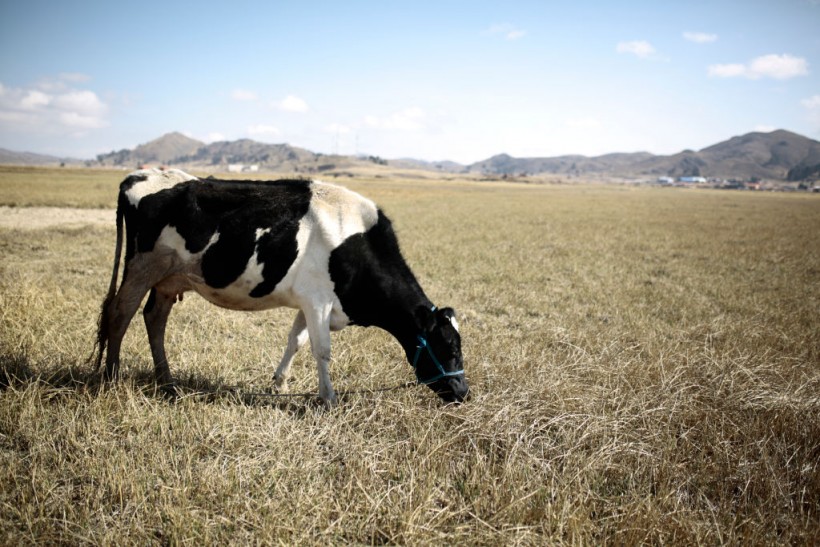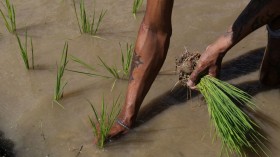Antibiotic resistance (AMR) is a serious and growing threat to global health, sickening an estimated 2 million people in the United States each year.
There is strong evidence that some resistance in bacteria is caused by antibiotic use in food animals (cattle, poultry, swine).
Antibiotics are used in animal feed for various purposes, such as treating diseases, boosting growth, improving feed utilization, and reducing mortality.
However, this practice can lead to the emergence and spread of antibiotic-resistant bacteria (ARB) and antibiotic-resistant genes (ARGs) in the environment and the food chain.
In 2017, the Chinese government banned the use of colistin, a last-line antibiotic for human infections, as a growth promoter in animal feed in response to the rapid spread of colistin-resistant E. coli carrying mobile colistin resistance (MCR) genes.
The ban led to a 90% reduction in colistin consumption, and scientists expected to see a corresponding drop in rates of AMR.
However, large-scale surveillance studies across China following the ban found that the decline in the MCR-1 gene was slower than anticipated.
A new study led by the University of Oxford has found that the natural evolution of ARGs has maintained resistance in bacteria despite a reduction in the use of antibiotics.
How evolution stabilizes resistance genes
 (Photo : Gaston Brito Miserocchi/Getty Images)
(Photo : Gaston Brito Miserocchi/Getty Images)

The researchers at the University of Oxford focused on the regulatory region of DNA that controls the expression of the mcr-1 gene.
They found that this region shows high levels of variation and that certain variants were able to offset the fitness costs of the mcr-1 gene.
By "fine tuning" mcr-1 expression to a lower level, these variants enabled the bacteria to achieve high growth rates while simultaneously increasing colistin resistance.
The researchers then analyzed DNA sequence data from E. coli carrying mcr-1 from before and after the colistin ban.
They found that the frequency of low-expression variants increased significantly after the ban, indicating that natural selection favored these variants in the absence of antibiotic pressure.
The researchers also performed laboratory experiments to confirm that low-expression variants had higher fitness and resistance than high-expression variants.
The study demonstrates how evolution can rapidly stabilize resistance genes in pathogen populations, reducing the impact of restricting antibiotic consumption.
Professor Craig Maclean, the lead author of the study, said: "Our study shows how evolution can rapidly stabilize resistance genes in pathogen populations, reducing the impact of restricting antibiotic consumption. Limiting consumption is one of the most widely advocated strategies to combat AMR, and the main lesson of our work moving forward is that we need new, innovative strategies to actively eliminate AMR bacteria."
Also Read: Babies' Health: Antibiotics Can Cause Gut Microbiome Disturbances in Infants
What are the alternatives to antibiotics in animal feed?
The most straightforward measure for reducing the use of antibiotics in animal production is to ban or minimize the use of antibiotics as growth promoters.
The Codex Alimentarius specifically advises that antibiotics should not be used in feed for growth-promoting purposes in the absence of a public health safety assessment, and that, in any case, their use should be minimized.
But other critical measures must also be pursued.
One is the development of alternatives to antibiotics that work via similar mechanisms, promoting growth and increased production yield whilst enhancing the efficiency of feed conversion and promoting animal health and welfare.
Some examples of potential alternatives are probiotics, prebiotics, synbiotics, organic acids, enzymes, phytogenics, bacteriophages, and vaccines.
These alternatives may have different modes of action, such as modulating gut microbiota, enhancing the immune system, inhibiting pathogen growth, or enhancing nutrient digestion.
Another is ensuring good hygiene, biosecurity measures, and general conditions on farms to prevent the need for any medicines in the first place.
If animal production and transport environment and conditions are improved, for instance by reducing stock density and stress, or by increasing hygiene and by introducing disease control techniques, then the actual need for growth promoters may be removed.
The Food and Agriculture Organization (FAO) works to promote these measures with a variety of stakeholders in the livestock sector.
Reducing antibiotic usage in animal feed is not enough to combat AMR. It is also necessary to understand how resistance genes evolve and persist in bacteria and to develop and implement effective alternatives and preventive strategies.
This will require a coordinated effort from governments, researchers, farmers, veterinarians, and consumers to ensure a sustainable and healthy future for both humans and animals.
Related article: Continuous-Flow Cefazolin: A New Method for Producing Antibiotics That Can Meet the Demand and Reduce Waste
© 2024 NatureWorldNews.com All rights reserved. Do not reproduce without permission.





